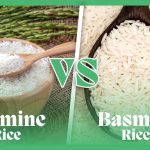In the world of fitness enthusiasts and athletes, the quest for the perfect supplements is a constant practice beyond the bold and tempting claims. Amidst the abundance of supplement options, one stands out the most – Gold Standard 100% Whey protein.
Are you a gym enthusiast or a seasoned lifter who wants to uncover the science behind this perfect supplement? Then you’ve hit the bullseye by landing here.
Let us provide insights behind this whey protein, decode its contents, analyze its benefits, and unravel its health potential.
What is Optimum Nutrition?
Optimum Nutrition (ON) is a sports nutrition company founded in 1986 in Middleborough, UK. It has been working in the supplement business globally for more than 35 years and is highly trusted by its customers. Optimum Nutrition provides top-tier products with careful ingredient selection, rigorous lab tests, and efficient production processes.
From protein powders, and endurance formulas to multivitamins; this company fulfills all of its customers’ needs. The gold standard 100% Whey Protein that arrives in a black tub is Optimum Nutrition’s best-selling product to date.
You would be lying if you call yourself a gym freak and haven’t bought whey protein powder at least once in your lifetime I have yet to see a person interested in fitness who never tried it.

What is whey protein?
Before diving into the nutritional world of the whey protein supplement, let’s first grab the basic concept of whey protein.
Cow’s milk comprises two types of protein: casein and whey. Aside from the 88% water content in whole milk, the macronutrient content consists of 5% carbohydrates, 4% fats, and 3% protein. 80% of this protein is made of white amorphous solid casein, whereas only 20% of the protein from whole milk comes from whey.
Whey is present in the watery portion of the milk and isolated during cheese production. It then goes through various processes to become the powder widely recognized as the whey protein.
Whey protein alone does not particularly taste good, so it usually comes flavored i.e. chocolate-flavored, vanilla-flavored, or strawberry-flavored whey.

Why is whey protein important?
Whey is recognized as the rapidly metabolizing “complete protein” that incorporates all the nine essential amino acids the body needs but fails to produce. Athletes and gym people prefer complete protein as it helps in muscle building and recovery.
Whey protein is high in branched-chain amino acids (BCAA) such as leucine, isoleucine, and valine. Studies show that BCAAs aid in muscle growth and building, reduce muscle wasting, prevent post-exercise fatigue, and support the liver.
A study showed that consuming BCAAs after exercise increases muscle protein synthesis by up to 22% (1). However, BCAAs alone may not significantly elevate muscle protein synthesis; they require the assistance of essential amino acids to reach the elevation.
Whey protein is essential because it is fast digesting and suitable to consume after long and tiring workouts. On the other hand, casein remains solid for quite some time during digestion, so athletes may prefer whey over casein.
Types of whey proteins:
Whey protein comes in three types:
Whey protein concentrate:
Whey protein concentrate (WPC) has the best flavor, is made of 70-80% protein, and contains lactose.
Whey protein isolate:
With 90% or higher protein content, whey protein isolate (WPI) lacks beneficial nutrients found in the WPC. It has less lactose and low fat.
Whey protein hydrolysate:
It is also called hydrolyzed whey. Whey protein hydrolysate (WPH) is a pre-digested protein so it is absorbed faster and causes 40% more spikes than the isolate ones.
Choosing the right whey:
After gaining knowledge of the different types of whey, you might be wondering which one fits you well. The most common whey in the market is whey protein concentrate, so if you are okay with whey that has slightly high calories, carbohydrates, and fats, you can choose this one right away.
But if you want less fat, carbohydrate, and cholesterol in your whey, the isolate one is best for you. Finally, whey protein hydrolysate is the one in which isolate and concentrate have been broken down into small pieces for easy absorption.
Nevertheless, any variety of whey protein you choose will fulfill your protein requirement.
What is the Optimum Nutrition of Whey Protein?
Gold Standard 100% Whey Protein is a widely famous, rewarded, and most-reviewed sports nutrition supplement introduced by Optimum Nutrition. Over the years, it stood tall amongst the tons of its protein powder competitors.
But did you know that it was not previously known as what it is today? Let us look into a little history of how it became the Gold standard for 100% whey protein.
In the late 1990s, it was called 100% whey protein which comprised 21 grams of concentrated whey protein per serving. But as the market and consumer demands evolved, they increased it to 22 grams in each serving. With the introduction of whey protein isolates, the supplement became a blend of whey protein concentrate and whey protein isolate.
Whey protein isolate gained popularity, so they increased the concentration of whey protein isolate than whey protein concentrates. But then, the third type of whey protein emerged; whey protein hydrolysate, so the supplement became 100% whey protein hydrolysate. The concentration was also increased to 24 grams per serving. In the early 2000s, the 100% whey protein became Gold standard 100% whey protein to show itself to the world.
How to use it?
The gold standard is the instant version of the whey protein. It can be used in a variety of ways; you can blend it, shake it, mix it, bake it, and cook it to bring it to the next level.
Mixing:
Mix 1 scoop of the powder in 6-8 ounces of liquid. The liquids could be water, milk, soy milk, almond milk, juices, and more.
Blending:
Blend the powder with chia seeds, flaxseeds, berries, greens, oats, nuts, seeds, yogurt, and honey.
Cooking:
Bake and cook the powder by adding it to your favorite recipes.
When to use it?
Consume the whey powder 2-4 hours before exercise along with a balanced meal of carbohydrates and proteins. As your exercise time nears, place greater emphasis on your carbohydrate consumption.
Post-work-out intake of this powder is essential for muscle recovery, so a scoop of the gold standard powder mixed in a liquid of your choice at any time after the exercise is important.
It can also be used as a placement for protein nutritional gaps. If your protein requirements are not met, use this supplement once a day.
The whey protein powder is good for breakfast, snacks and even throughout the day as it provides a feeling of fullness to the body and can be used for weight loss as well.
Ingredients:
Gold standard 100% whey protein is a blend of three whey proteins which provides 24 g of proteins and 5.5 g of BCAAs per serving. It is a low-calorie formula and includes added flavors, colors, and sweeteners.
The ingredients of the powder depend on the flavor, some of the common ingredients are sunflower or soy lecithin, natural and artificial flavors, artificial colors, sweeteners, salt, and sucralose.
Though all the artificial ingredients are approved by the Food and Drug Administration (FDA), however, long-term consumption of these may not be advised.
Flavors:
Aside from seasonal, gold standard, 100% whey protein comes in a wide range of flavors. They are famous for their chocolate flavors, vanilla ice cream, Rocky Road, and vanilla ice cream flavors. All of the flavors available for the whey protein powder are mentioned below:
- Banana cream
- Chocolate coconut
- Chocolate hazelnut
- Chocolate malt
- Chocolate mint
- Chocolate peanut butter
- Coffee
- Cookies and cream
- Delicious strawberry
- Double rich chocolate
- Extreme milk chocolate
- French vanilla cream
- Mocha Cappuccino
- Rocky Road
- Strawberries & Cream
- Strawberry Banana
- Vanilla Ice Cream
- White Chocolate
Nutritional composition:
The serving size (1 scoop) of the supplement ranges between 30-33 grams depending on the flavor of the powder. It is a low-calorie supplement that has excess carbohydrates and fats removed due to the protein isolate dominant formula. All the flavors contain the same amount of protein (24 g), fats range between 1-2g, carbohydrates 2-5 g, and sugar 1-3 g. The sodium and cholesterol content of the powder varies with the flavor and can go up to 130 mg and 60 mg, respectively.
| Nutrients | Amount |
|---|---|
| Calories | 12-130 g |
| Proteins | 24 g |
| Fats | 1-2 g |
| Carbohydrates | 2-5 g |
| Sodium | Up to 130 mg |
| Cholesterol | Up to 60 mg |
| Sugar | 1-3 g |
Role in human nutrition:
Some of the benefits of gold standard whey are as follows:
Muscle growth:
Adequate dietary protein or whey protein supplement consumption coupled with resistant training increases muscle growth. A study on young adults showed that whey increases muscle protein synthesis and improves the muscle cross-sectional area when combined with strength training (2).
Whey is also beneficial for people who lose muscle mass with age leads to weight gain and increases the risk of many diseases.
Lowers blood pressure:
Did you know that whey protein also helps reduce blood pressure?
High blood pressure is one of the major factors of cardiovascular diseases. Whey protein lowers the likelihood of developing high blood pressure. A study revealed that whey reduces the systolic blood pressure in pre- or mild hypertensive patients along with improvement in endothelial dysfunction (3).
Manages type 2 diabetes:
Type 2 diabetes is a chronic disease characterized by elevated blood sugar and insulin resistance.
Whey protein has been studied in terms of managing blood sugar levels and increasing insulin sensitivity. It helps slow down gastric emptying and releases gut peptides including incretin, which contributes to the reduction of postprandial hyperglycemia.
Reduces inflammation:
Inflammation is a part of the body’s defense system; in which the immune system identifies and annihilates the foreign stimuli. Inflammation can be either acute or chronic and whey protein helps in the reduction of both types of inflammation.
A group of researchers worked on the effect of whey on C-reactive protein- a biomarker for inflammation. They found that a high dose of whey may help reduce the levels of this inflammatory biomarker (4).
Whey protein is also effective in managing inflammatory bowel diseases. IBD is a condition marked by chronic inflammation in the digestive tract lining and it encompasses both Crohn’s disease and ulcerative colitis.
Reduces cholesterol:
Low-density lipoprotein (LDL), commonly known as bad cholesterol is among the main culprits of cardiovascular diseases.
Surprisingly, consumption of whey protein reduces the level of total and LDL cholesterol. It was confirmed by a study where overweight individuals were given 65 grams of whey every day for 12 weeks. The study showed a significant reduction in total and LDL cholesterol levels (5).
Helps in weight loss:
Whey protein powder may help in weight loss as high protein consumption in a weight loss journey is a proven strategy. Protein consumption reduces fat content by suppressing appetite, accelerating metabolism, and keeping muscle mass.
Who should not use it?
While this supplement is a suitable option for everyone out there, however, the whey is derived from cow’s milk so vegetarians, vegans, and lactose-intolerant people might wish to stay away from it.
Gold standard 100% whey protein contains artificial flavors and sweeteners, making it unsuitable for individuals aiming to eliminate these from their diet.
In the end, ON Gold standard 100% whey protein is the perfect supplement for people aiming to incorporate extra protein in their everyday diet. One does not only have to be an athlete or a gym enthusiast to pick up a tub of this protein powder, but if you wish to increase your protein intake or enjoy its other benefits discussed earlier, this supplement is the right one for you
References:
- 10.3389/fphys.2017.00390
- https://doi.org/10.1186/1743-7075-7-51
- https://doi.org/10.1002/fsn3.1040
- 10.3390/nu7021131
- https://doi.org/10.1016/j.jnim.2015.08.002








